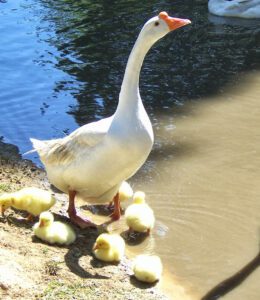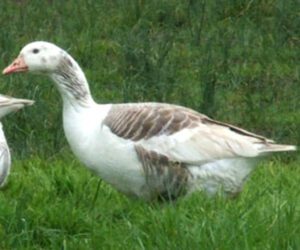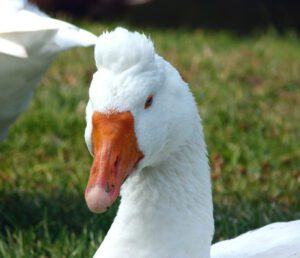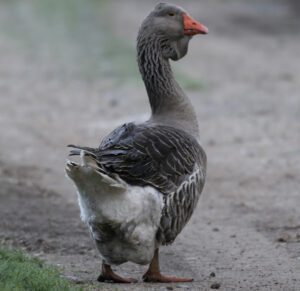The Cotton Patch goose is an American breed of domestic goose. It was originated from the Southern United States.
The breed was traditionally used to weed field of cotton, corn and other crops, that’s why it’s named so.
Exact origins of the breed are not clear. But it is thought that, the breed has descended from the European stock brought to the United States during the colonial period. It was kept on the rural Southern homesteads up until the 1950s.
The breed was used as a multi-purpose poultry bird to weed crop fields, eggs, meat, down and grease. Herbicides almost entirely replaced weeding on American farms, after the mid 20th century.
And numbers and popularity of the Cotton Patch goose declined. Especially it has largely disappeared from the Southern American farms where it was once more common.
Currently the breed is considered as critically endangered by the American Livestock Breeds Conservancy. The breed is also included in Slow Food USA’s Ark of Taste, a catalog of heritage foods in danger of extinction. Read more information about the breed below.
Cotton Patch Goose Characteristics
Cotton Patch goose is a medium sized breed. It is similar in color to the Shetland goose and Pilgrim goose. The ganders usually are of white color with some dove gray feathers on the back and tail.
While the geese are either entirely gray or pied gray and white (also called saddleback). Bills and feet of these birds are pink rather than orange, like the Pilgrim.
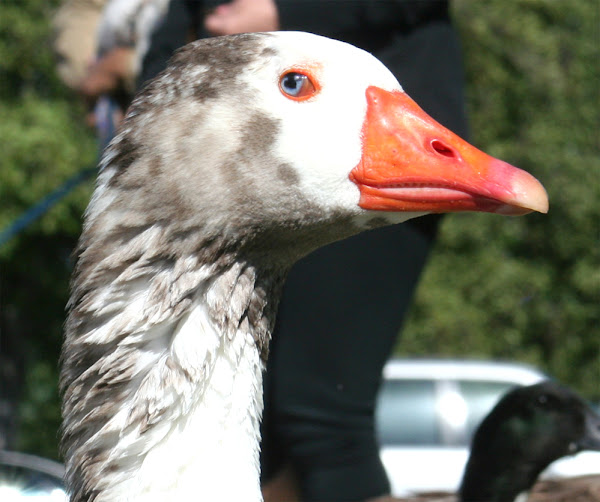
The breed is an upright goose with tail in line with back and wings, giving it a clean wedge profile. Body of the Cotton Patch goose is more elongated and less rounded than Shetland and Pilgrim breeds.
Average live body weight of the mature Cotton Patch ganders is between 4 and 5.5 kg. And average mature body weight of the geese vary from 3.6 to 4.5 kg. Photo and info from Wikipedia.
Uses
Cotton Patch goose is a multi-purpose breed. It was mainly used for weeding the fields of cotton, corn and other crops.
The breed is also noted for helping many farmers and their families in the rural south by providing a regular source of eggs, meat and grease.
Special Notes
The Cotton Patch goose is very hardy and active bird. It is especially well-adapted to the climate of the Southeastern United States. It is very heat tolerant and has relatively good flying ability.
Gender of these birds are easily identified by their color. Smaller size of the birds allow them to tolerate hot weather better than the heavier goose breeds. They have the ability to fly well beyond their first year, easily clearing 5-6 foot fences without a running start.
They are excellent foragers and very good for extensive farming system. However, review full breed profile of the Cotton Patch goose the following chart.
| Breed Name | Cotton Patch | |
| Other Name | Known by some other names locally | |
| Breed Purpose | Meat, eggs, weeding, grease | |
| Special Notes | Very hardy and active, well adapted to the climate of the southeastern United States, heat tolerant, good flying ability, excellent foragers, very good for extensive management system | |
| Breed Class | Medium | |
| Ganders | 4 to 5.5 Kg | |
| Geese | 3.6 to 4.5 Kg | |
| Broodiness | Good | |
| Climate Tolerance | All climates | |
| Egg Color | White | |
| Egg Size | Large | |
| Egg Productivity | Average | |
| Flying Ability | Good | |
| Varieties | Single | |
| Rarity | Critically endangered | |
| Country/Place of Origin | United States |


